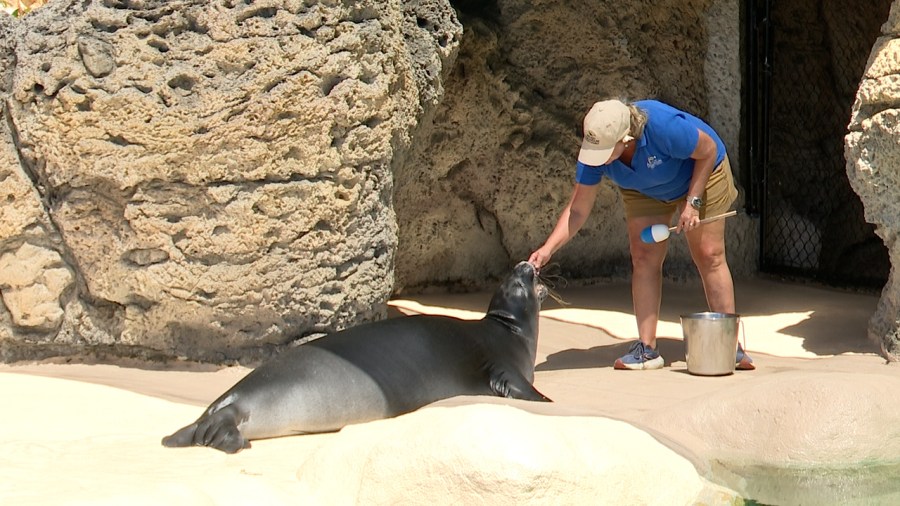HONOLULU – It’s not unusual to see a monk seal sunbathing or resting on public beaches, especially over the last few days.
But in some cases, people can be observed getting a little too close to the animal, potentially frightening it, and endangering both themselves, and the mammal likely trying to get some rest.
“Seals do come out onto the beach to rest, they do a lot of swimming. Imagine if you were swimming for a couple of hours and you’re super exhausted and somebody blocks you from getting onto that beach to get a little bit of rest,” said Cydney Johnson from the Waikiki Aquarium Monk Seal Core Team. “It can be quite frustrating. Then that seal has to then be exhausted, and go back out into the water and find a new place to rest.”
Monk seals can sometimes be swimming and foraging for food for days, so the time that they do go onto the beach to rest could potentially be the first time in a long time.
The monk seal is also one of the most endangered aquatic mammals in the world, with a current population estimate of about 1,600 in Hawaii according to the Department of Land and Natural Resources.
The Waikiki Aquarium has one monk seal in their care, Ho’aliona (sign or symbol of the sea), who after being abandoned by his mother, and a few failed attempts to release him back into the wild due to medical reasons, has called Waikiki Aquarium home since 2011.
While Ho’aliona, or “Holo” is well cared for, and a little more accustomed to humans looking at him, the same can’t always be said for wild monk seals. It’s typically recommended to stay away from wild monk seals, because like any wild animal, they could get frightened by human presence, and even harm them.
“You should also keep 150 feet away from an animal or Hawaiian monk seals at all times,” said Johnson. “What I like to tell our guests is to stick out your arm and your thumb, if that thumb can cover the entire seal, you are far enough away.”
“A lot of people are working really hard to keep this population coming back,” said Kristen Kelly of the DLNR Department of Aquatic Resources. “They are kind of sensitive right now, so we’re going above and beyond to protect them and give them space and let them just be natural in their environment.”
Kelly says that the monk seal population is one of the bigger success stories in recent years, as the population was plummeting 10 years ago, but efforts such as seal rehab hospital on the Big Island Ke Kai Ola, helped the population be a little bigger today.
If you witness a monk seal, or any marine animal being harassed, you can call the Marine Animal Response Hotline: 1 (888)-256-9840.
You can also call DLNR Enforcement (808)-643-DLNR for monk seal sightings.
More information on monk seals, and all marine life in Hawaii on the NOAA website.
